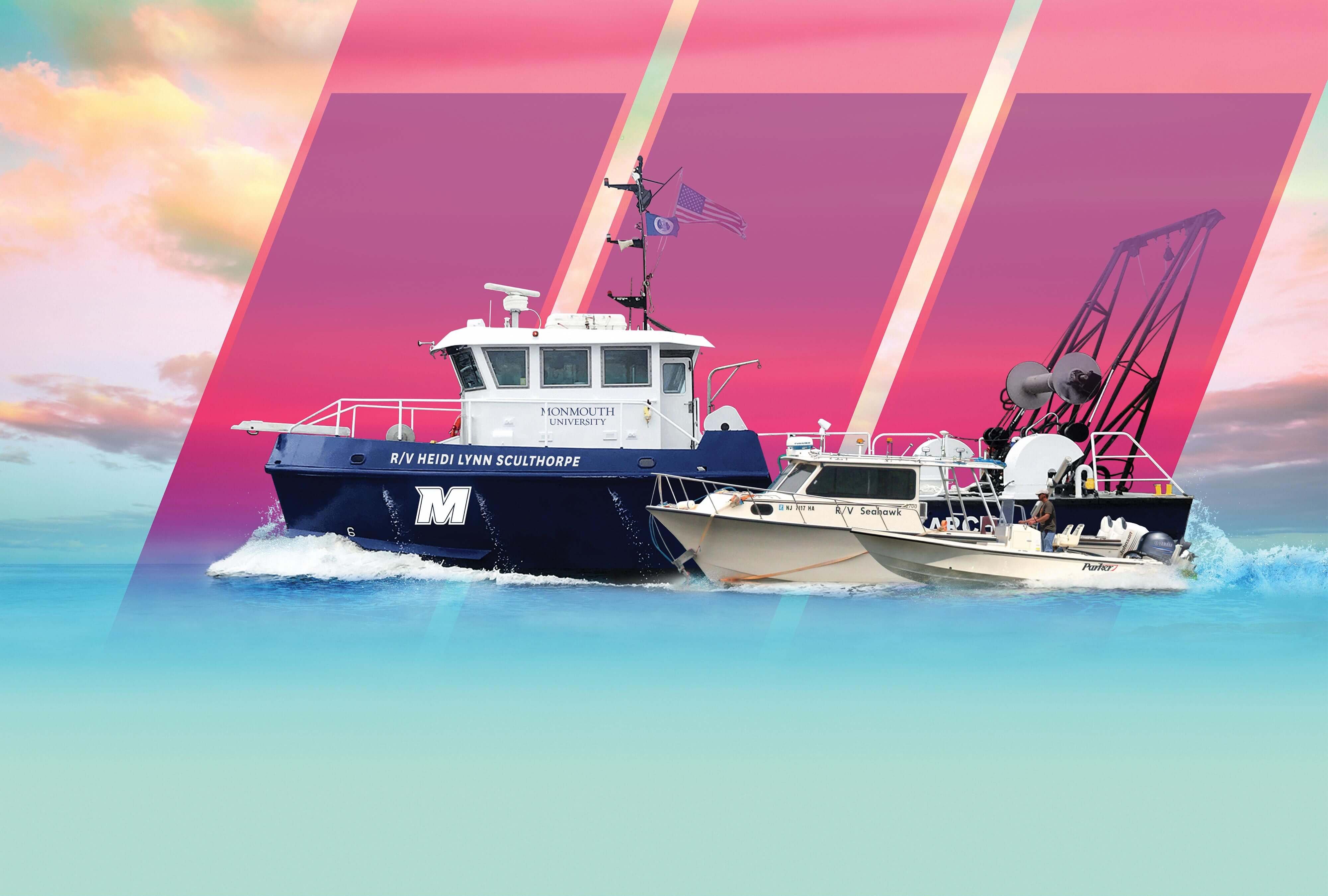
Meet the Fleet
A look at how Monmouth’s marine research vessels stack up.
Heidi Lynn Sculthorpe
1
- Length: 49 feet
- Beam height: 16.8 feet
- Passenger capacity: 21 passengers
- Cruising speed: 10 knots
- Distance offshore: 20 nautical miles
- Available overnight? Yes, sleeps 6—8
- Deck square footage: 225 sq. feet
Seahawk
2
- Length: 27 feet
- Beam height: 9.5 feet
- Passenger capacity: 6 passengers
- Cruising speed: 20 knots
- Distance offshore: 10 nautical miles
- Available overnight? Yes
- Deck square footage: 88 sq. feet
Little Hawk
3
- Length: 18 feet
- Beam height: 7.5 feet
- Passenger capacity: 6 passengers
- Cruising speed: 20 knots
- Distance offshore: 3 nautical miles
- Available overnight: No
- Deck square footage: 36 sq. feet
The largest ship in Monmouth’s fleet, the Heidi Lynn provides researchers with an array of state-of-the-art technologies, including side-scan sonar and hydrographic survey equipment that allow for detailed seabed mapping. It can tow up to a 30-foot trawl, allowing for larger swaths of marine life to be netted, and can deploy and recover oceanographic buoys and moorings, which allows researchers to study stock assessments of coastal marine species. The vessel also supports diving and dredging operations and allows for sediment collection via benthic grabs and gravity corers.
“Few universities throughout the East Coast have a research vessel of this class,” says President Grey Dimenna. “The Heidi Lynn will advance our growth as a premier marine research and policy center in the region.”
The boat, originally christened the Nauvoo, was used as a Coast Guard buoy tender before being acquired by the National Oceanic and Atmospheric Association for research work. In October 2017, NOAA gave the boat to Monmouth at no cost. The vessel was renamed this past October in memory of Heidi Lynn Sculthorpe, daughter of University Trustee Emeritus Robert B. Sculthorpe ’63, ’15HN, who gave a generous gift that will help the Univeristy continue to improve the vessel.
Unlike Monmouth’s other two R/Vs, the Heidi Lynn sleeps up to eight researchers for overnight, around-the-clock operations, allowing for additional capacity to work collaboratively with government agencies, academic institutions, and non-governmental organizations.
While this newest R/V allows for work at a larger scale than ever before, Monmouth’s other two research vessels are not to be outdone[1]. The Seahawk is still the go-to boat for smaller crews that need to get out on the water quickly to conduct operations in shallow areas. And the Little Hawk is ideal for small crews who need only work with hand-deployed equipment within three miles of the coast.
Footnote
- The University also has two johnboats that are used for research on coastal lakes.